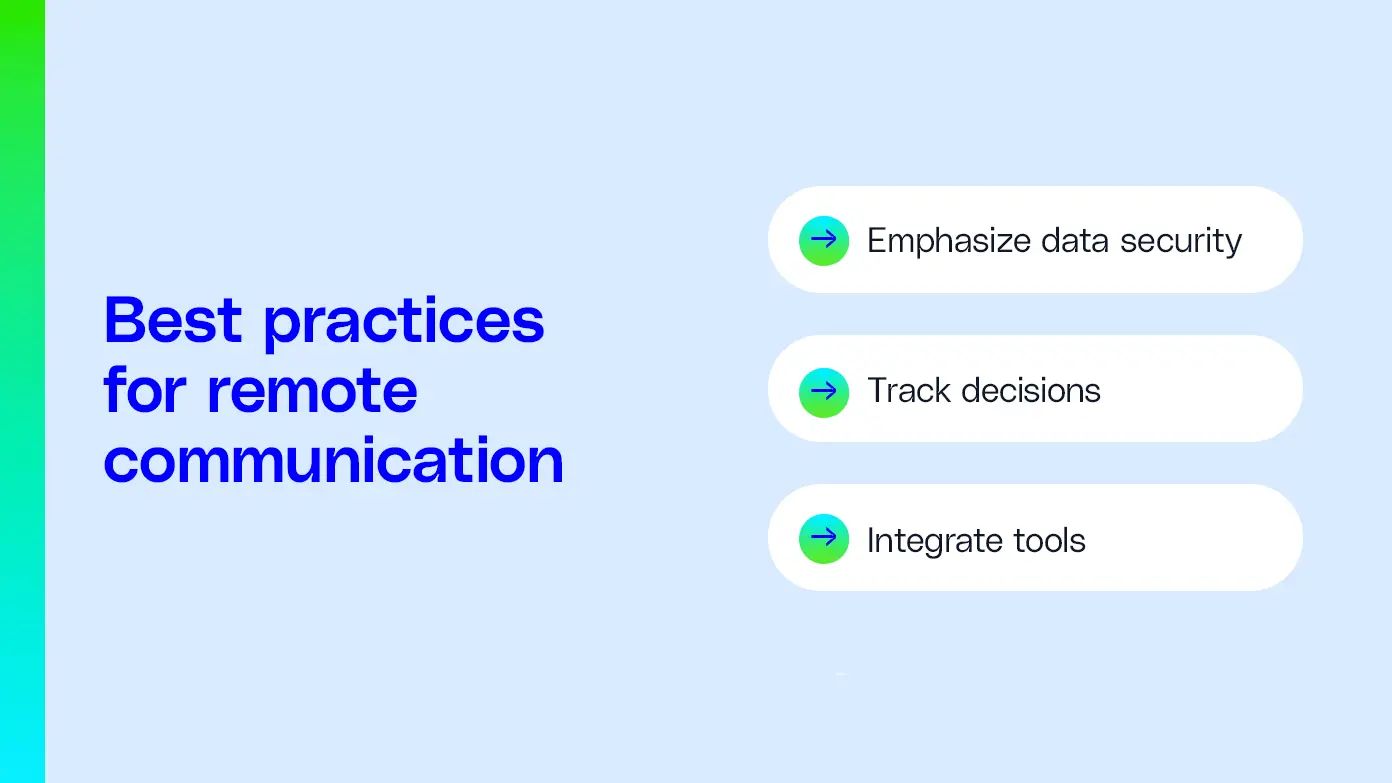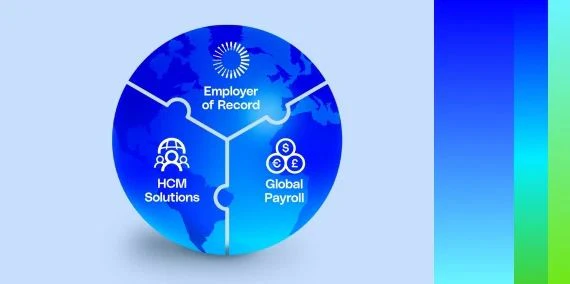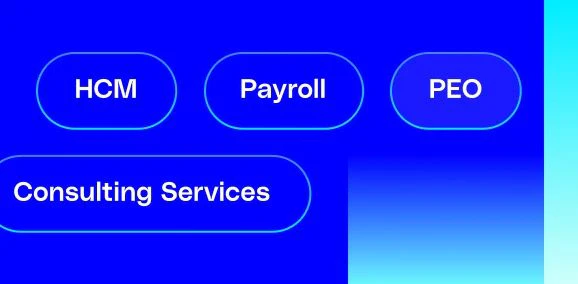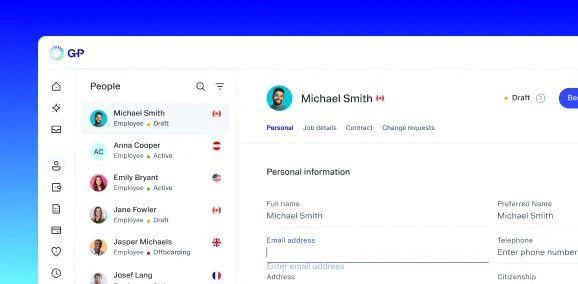Without clear communication among remote teams, tasks stall, policies are overlooked, and teams are disconnected. Knowing when and how to use synchronous vs. asynchronous communication helps keep your global workforce efficient, informed, and aligned.
What is synchronous communication?
Synchronous communication happens in real time. Everyone involved is present and responds immediately. Examples include phone calls, video calls, or live collaboration on platforms like Google Docs. All participants need to be available at the same time — regardless of their location — to enable synchronous communication. This type of communication is practical for team meetings, one-on-ones, and urgent decisions.
|
Benefits |
Challenges |
|---|---|
|
Issues get clarified fast. |
Time zones and schedules make coordination challenging. |
|
Direct communication reduces misunderstandings. |
An overreliance on live communication can reduce flexibility and increase |
|
Clear communication builds team connection. |
Burnout occurs when employees feel pressure to always be available. |
What is asynchronous communication?
Asynchronous communication doesn't happen in real time. You send a message, and the recipient responds later, as with emails and project management tools. This type of communication is good for sharing updates, assigning tasks, documenting decisions, and gathering input from different teams. Asynchronous communication works well for teams across time zones or with flexible schedules.
|
Benefits |
Challenges |
|---|---|
|
Employees can respond when they have time. |
Delayed feedback can slow progress on urgent projects. |
|
Fewer interruptions support deep work. |
Misinterpretation can occur when tone is unclear. |
|
Written records improve documentation. |
Overuse can affect engagement. |
Differences between synchronous and asynchronous communication
Choose a communication method based on urgency, issue complexity, team location, and work style. Here's a comparison:
|
Category |
Synchronous communication |
Asynchronous communication |
|---|---|---|
|
Timing |
Real time |
Delayed |
|
Methods |
Video and phone calls, Slack huddles |
Email, Slack messages, Loom, project management tools |
|
Availability |
All parties present at once |
Participants respond on their own time |
|
Best use cases |
Live meetings, urgent issues, and real-time collaboration |
Status updates, task tracking, and documentation |
|
Benefits |
Fast resolution, human connection, and clarity |
Flexibility, fewer interruptions, and record-keeping |
|
Challenges |
Time zones, scheduling, and interruptions |
Slow feedback, risk of misinterpretation, and disconnection |
Finding the balance between synchronous and asynchronous communication
It's important to find a communication balance for your team. Around 53% of remote employees find it difficult to stay connected to their co-workers, and synchronous communication can help. However, relying too much on synchronous communication can cause meeting fatigue.
The goal is to match the message with the method. Keep workflows smooth, support focus, and respect everyone's time. Here's how to create a balanced approach that fits your team's needs.
1. Invest in a secure, compliant communication platform
Global teams need tools that support localization, mobile access, and integrations with other systems. Select a platform that meets your privacy, security, and compliance needs. You handle sensitive financial, HR, and legal data, so your platform should support encryption, audit trails, and access controls. These tools must also comply with standards such as the European Union's General Data Protection Regulation (GDPR) and Systems and Organization Controls 2 (SOC2) in the U.S.
2. Build a balanced communication culture
Balance is key. Overusing one method can cause friction or burnout. Set core hours for synchronous work, and encourage asynchronous updates where possible. Clearly defining when a message warrants a meeting vs. a written update reinforces the value of both communication types. For example, teams working across time zones might use Slack and Asana for daily updates, reserving weekly video calls for issue resolution. Team leaders should:
-
Schedule regular check-ins with teams.
-
Set a response expectation for synchronous and asynchronous messaging.
-
Set procedures for cross-time-zone communication expectations.
3. Set clear expectations and protocols
Create guidelines for tool use and response expectations. Define which channels are used for what. For example, Slack is ideal for quick check-ins. Set expectations for response windows, availability, and escalation paths. Document protocols and make them accessible to all team members, including new hires. This simplifies communication and shows trust in employees' communication efforts.
4. Prioritize training and technology integration
Train managers and team members on how to use communication tools. Focus on writing clear messages, using calendars, managing notifications, and maintaining records. Integrate platforms with your human resources information system (HRIS), customer relationship management (CRM) software, or project tools to streamline workflows. Encourage feedback to improve adoption and keep tools aligned with your team's needs.

Tools and technologies for effective communication with global teams
Managing communication across borders is complex. Different time zones, languages, and regulations can lead to misalignment and delays. A hybrid communication model combines synchronous and asynchronous methods based on your team structure, workflows, and needs. Here are some tools and best practices for remote communication:
-
Document collaboration: Use tools such as Google Workspace to create, review, and edit documents in real time or asynchronously.
-
Knowledge-sharing: Knowledge-sharing tools, such as Notion or Confluence, centralize communication and track decisions.
-
Integration: Your communication tools should support single sign-on, encryption, access control, and integration with your existing tech stack. This ensures communication is secure and centralized.
G-P Gia™ is the indispensable global HR agent for companies overwhelmed by the complexities of international team management. Gia reviews, edits, and generates compliant HR documents in seconds. Ensure clear communication across your global team with Gia's translation capabilities. Quickly adapt policies, contracts, offer letters, job descriptions, and more to 50+ languages.
How can a global employment platform help companies improve workforce management?
Global employment platforms reduce the risks of communication lapse by standardizing how HR teams manage cross-border workforces. G-P™ can help your company improve workforce management with:
-
A centralized platform: Take care of HR, legal, and compliance functions on one secure platform, from anywhere in the world.
-
Integration capabilities: G-P integrates with best-in-class HCM, payroll, and PEO providers to create a single source of truth for all your global team data.
-
In-country expertise: G-P in-country experts can help you understand local labor practices and communication norms.
A global employment platform simplifies hiring, onboarding, and managing teams across countries. It gives you a centralized system for managing employee data, processes, and policies, which helps align communication standards and tools.
Build a connected global team with G-P
Synchronous and asynchronous communication help keep global workforces connected. A healthy balance of both methods boosts productivity and empowers your team to perform at its best.
As the recognized leader in global employment, G-P helps companies of all sizes hire, onboard, and manage global teams in 180+ countries, regardless of entity status. Our AI-powered global employment products and EOR solutions are backed by the largest team of in-country HR, legal, and compliance experts to streamline and simplify the entire global employment lifecycle.
Contact us today to learn more.





















